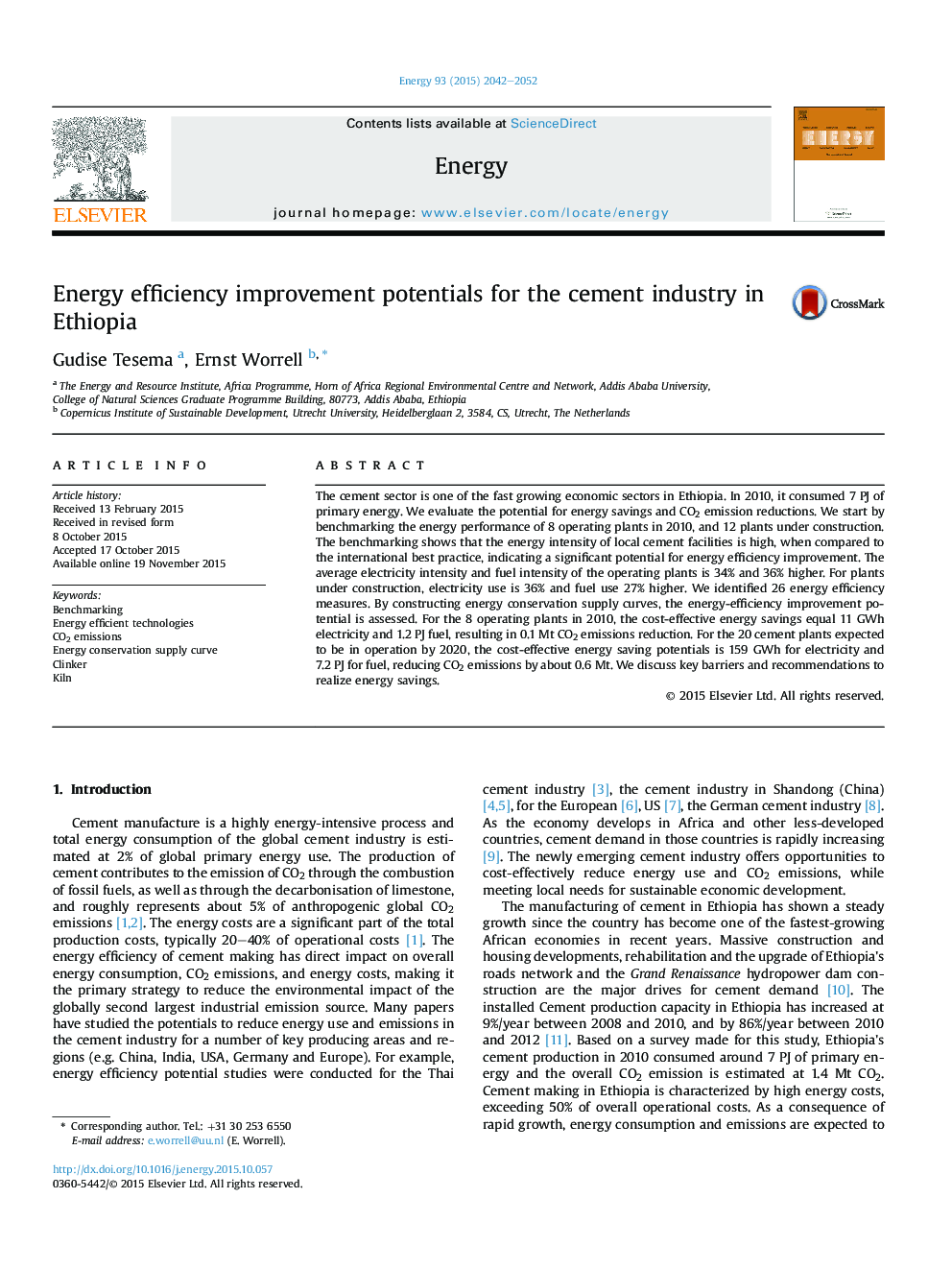| Article ID | Journal | Published Year | Pages | File Type |
|---|---|---|---|---|
| 1731642 | Energy | 2015 | 11 Pages |
Abstract
The cement sector is one of the fast growing economic sectors in Ethiopia. In 2010, it consumed 7Â PJ of primary energy. We evaluate the potential for energy savings and CO2 emission reductions. We start by benchmarking the energy performance of 8 operating plants in 2010, and 12 plants under construction. The benchmarking shows that the energy intensity of local cement facilities is high, when compared to the international best practice, indicating a significant potential for energy efficiency improvement. The average electricity intensity and fuel intensity of the operating plants is 34% and 36% higher. For plants under construction, electricity use is 36% and fuel use 27% higher. We identified 26 energy efficiency measures. By constructing energy conservation supply curves, the energy-efficiency improvement potential is assessed. For the 8 operating plants in 2010, the cost-effective energy savings equal 11Â GWh electricity and 1.2Â PJ fuel, resulting in 0.1Â Mt CO2 emissions reduction. For the 20 cement plants expected to be in operation by 2020, the cost-effective energy saving potentials is 159Â GWh for electricity and 7.2Â PJ for fuel, reducing CO2 emissions by about 0.6Â Mt. We discuss key barriers and recommendations to realize energy savings.
Keywords
Related Topics
Physical Sciences and Engineering
Energy
Energy (General)
Authors
Gudise Tesema, Ernst Worrell,
